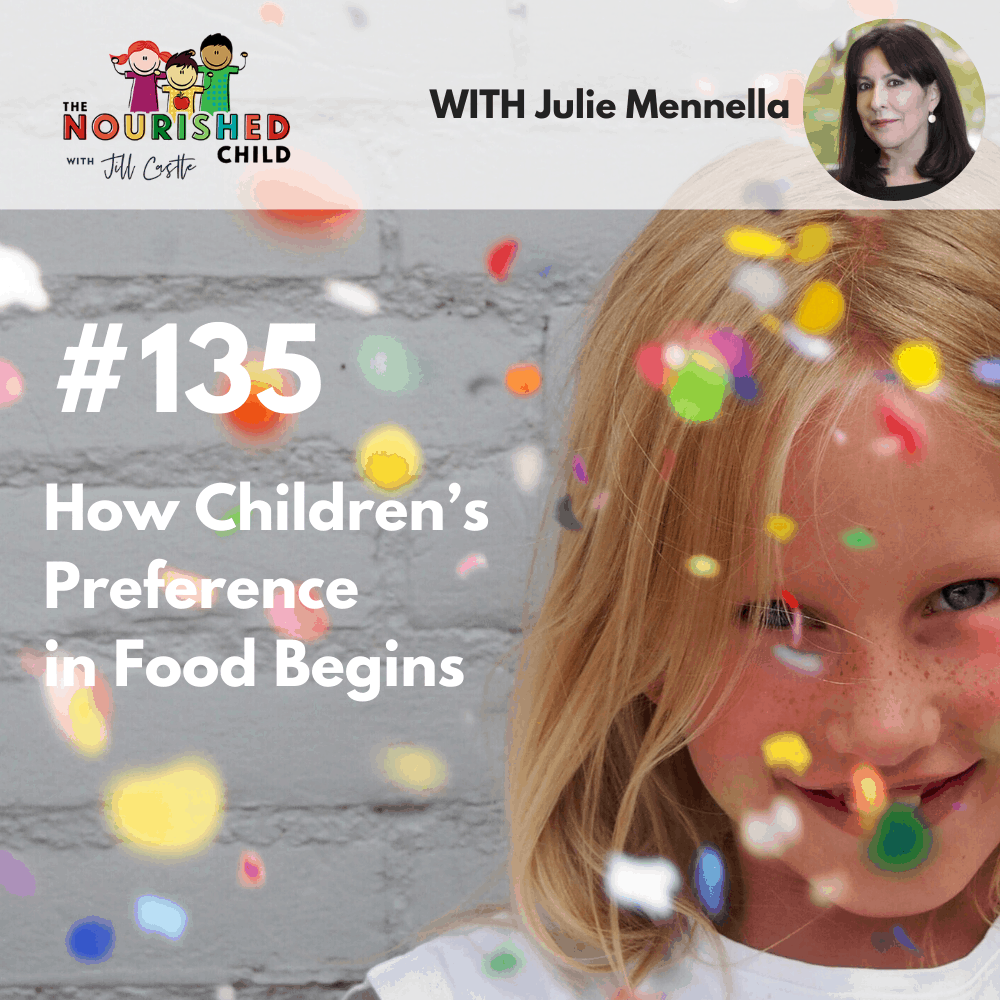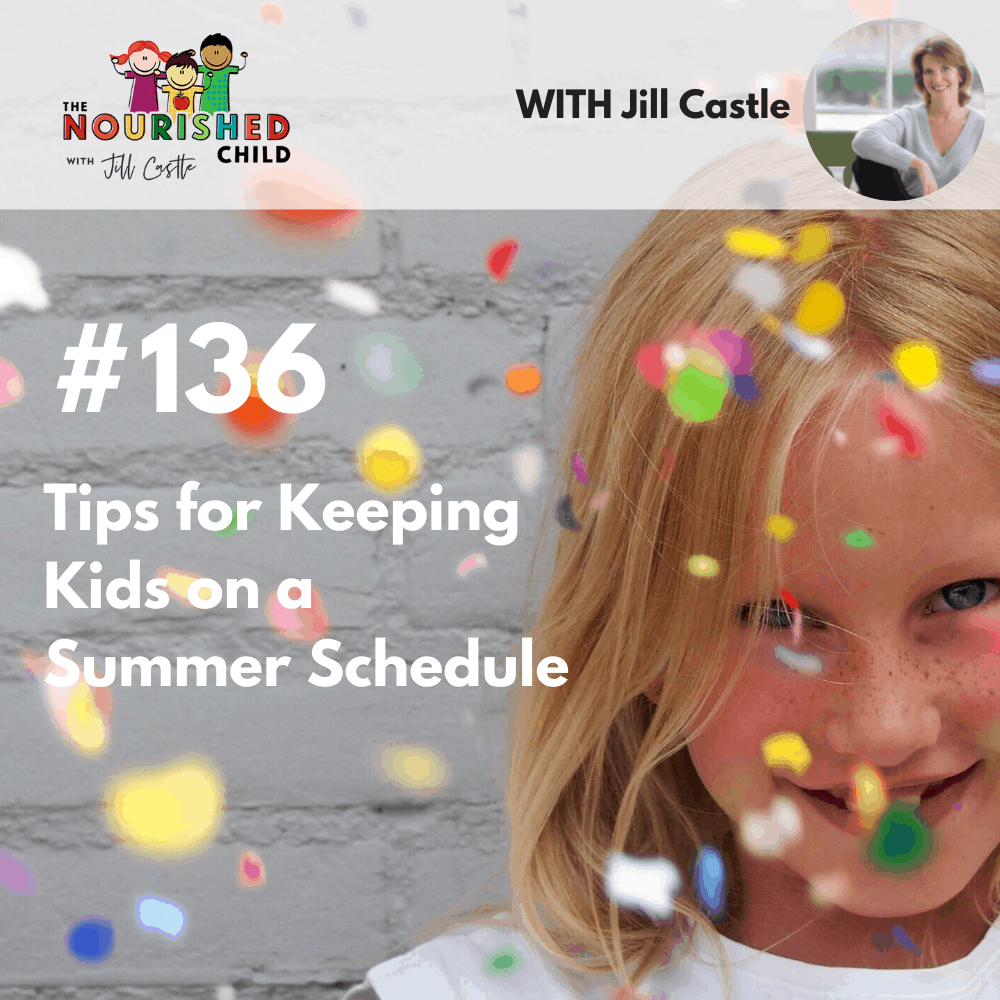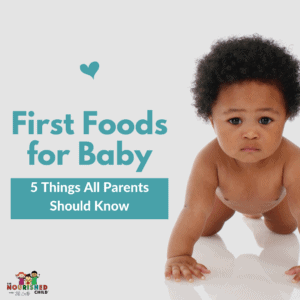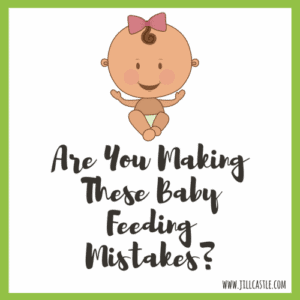Prevent Picky Eating With Flavor Training for Babies
May 14, 2021
Picky eating is a challenge for the entire family, and in extreme cases it can have social and even health consequences for your child.
Ideally, you want to prevent picky eating behaviors before they take hold.
You’ve probably heard that a child needs to be repeatedly exposed to a new food before he accepts it, but have you heard of favor training for infants?
Flavor training is exposing a 4-6-month-old infant to different flavors, especially the bitter taste of vegetables, so he’s more likely to accept a variety of foods once he eats solids.
I’ll show how to prevent picky eating with a safe and easy way to introduce a variety of flavors to your infant!
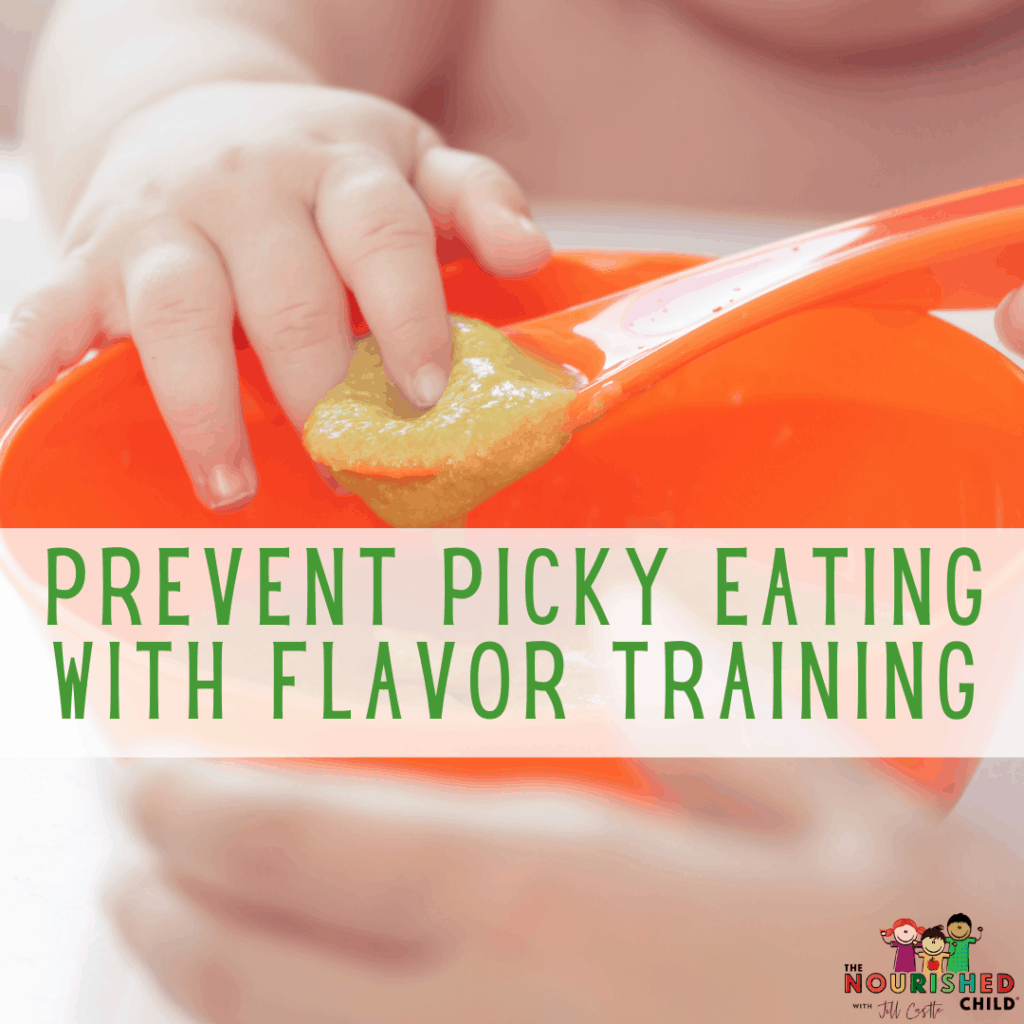
Development of Flavor Perception
Babies are very sensitive to flavors at 4-6 months old, and frankly through the first two years of life. Researchers call this the “flavor window,” a time when babies and toddlers are very open and accepting of new tastes.
Between 4 and 6 months is an excellent time to prime the pallet before introducing first foods at 6 months. This is especially important for bitter tasting vegetables- the one food kids usually have the hardest time accepting.
Many factors affect a child’s food preferences and exposure to flavors early is one.
In utero, different flavors get transferred through the amniotic fluid. And breastfeeding babies get the flavors of the mother’s diet, which gets transmitted through the breast milk to the baby. Breast-fed babies may be less likely to be picky eaters later because of this.
Because both amniotic fluid and breast milk tend to be sweet, baby is very familiar with this flavor.
[LISTEN to the Podcast: Children’s Preference in Flavor with Dr. Julie Mennella]
In a study of 75 breastfed infants and their mothers, the mothers drank a variety of vegetable juices daily such as carrot juice. Once the infants were ready to eat solids, the infants of the mothers who drank vegetable juice were more accepting of cereal flavored with carrot juice.
Babies aren’t exposed to bitter or sour- those flavors have to be learned from the diet.
Formula has one flavor profile, so the baby tastes the same flavors day after day. Early exposure to other flavors is especially useful for babies given formula.
That’s where flavor training comes in.
Flavor Training Your Baby
There’s evidence that introducing vegetables early at around 4-6 months old increases a child’s acceptance and liking of vegetables during complementary feeding.
In a randomized control study, 18 infants (>4 months old) received a vegetable puree in formula then in rice cereal. The amount of vegetables given to the infants was gradually increased during the 35 day intervention. The infants given vegetable puree showed an increased intake of the target (carrots and green beans) vegetables during complementary feeding.
Another study showed that repeated exposure to vegetable purees during complementary feeding increased the baby’s vegetable intake and liking for at least up to 3 months after exposure.
What can you do at home to increase your baby’s vegetable intake?
Expose your baby to a wide variety of different flavors before he really starts solids. Starting when he’s around 4-6 months of age, give him a tiny amount of pureed vegetables frequently.
That’s it!
Watch my YouTube video for more tips on how to flavor train your baby!
[Watch Flavor Training for Babies on YouTube!]
Follow these easy steps below to get started.
1. Puree Vegetables
Puree broccoli, sweet potato, green beans or any vegetable you’d like but only offer one at a time.
Cook the vegetables so they’re soft enough to puree in a blender or food processor.
If you need to add liquid to get smoother consistency, add a little formula or breast milk.
2. Offer a Tiny Amount of Pureed Vegetables
Here are a few ways to give your baby a tiny smidge of puree to taste.
- Swipe a little on your baby’s lip.
- Put a little on your finger and let your baby suck on your finger.
Tip
Use pureed vegetables, not jarred baby food, so your baby learns to like the flavor of the foods he’ll eat when he starts solids.
[Learn How to Make Your Own Baby Food step-by-step!]
What About a Taste of Your Meal?
You can give your baby a dab of your food if it’s pureed consistency, such as a sauce.
Carefully choose what you give your baby to taste. You don’t want to set him up for failure or for it to be a negative experience. It should be a tiny amount just so he gets a bit of the flavor.
Negative eating experiences can lead to feeding problems later.
Is Flavor Training Safe?
We introduce babies to real food at around 6 months old when they show signs of readiness, such as he’s able to sit up and hold his head up, and takes an interest in what everyone’s eating around him.

[If you need help with starting solids, check out my book, The Smart Mom’s Guide to Starting Solids.]
So is introducing vegetables to a 4-month-old safe?
Remember, we’re talking about a tiny smidge of pureed baby food on your baby’s lips, not transitioning to solid food at this point.
It’s such a small amount of pureed food that he won’t choke. It’s not even enough food to add nutrition to the diet. And vegetables aren’t one of the top food allergens, so a tiny swipe of puree on your baby’s lip should be safe.
A Word About Food Allergies
Some babies with a family history of allergies are vulnerable to food allergies. Talk to your pediatrician about an early flavor training approach to introduce some of the allergens in the office.
Flavor training is a valuable tool to prepare babies to accept different flavors, especially babies fed formula.
The more flavors children are exposed to, the less likely to be picky as they get older.
For more information, read The Ultimate Guide to Baby’s Nutrition in the First Year.
And be sure to check out The Ultimate Guide to Feeding the Picky Eater!
References:
Hetherington, M. M., Schwartz, C., Madrelle, J., Croden, F., Nekitsing, C., Vereijken, C. M., & Weenen, H. (2015). A step-by-step introduction to vegetables at the beginning of complementary feeding. The effects of early and repeated exposure. Appetite, 84. https://doi.org/10.1016/j.appet.2014.10.014
Mennella, J. A., Daniels, L. M., & Reiter, A. R. (2017). Learning to like vegetables during breastfeeding: a randomized clinical trial of lactating mothers and infants. The American Journal of Clinical Nutrition, 106(1), 67–76.
Remy, E., Issanchou, S., Chabanet, C., & Nicklaus, S. (2013). Repeated exposure of infants at complementary feeding to a vegetable puree increases acceptance as effectively as flavor-flavor learning and more effectively than flavor-nutrient learning. The Journal of Nutrition, 143(7). https://doi.org/10.3945/jn.113.175646

